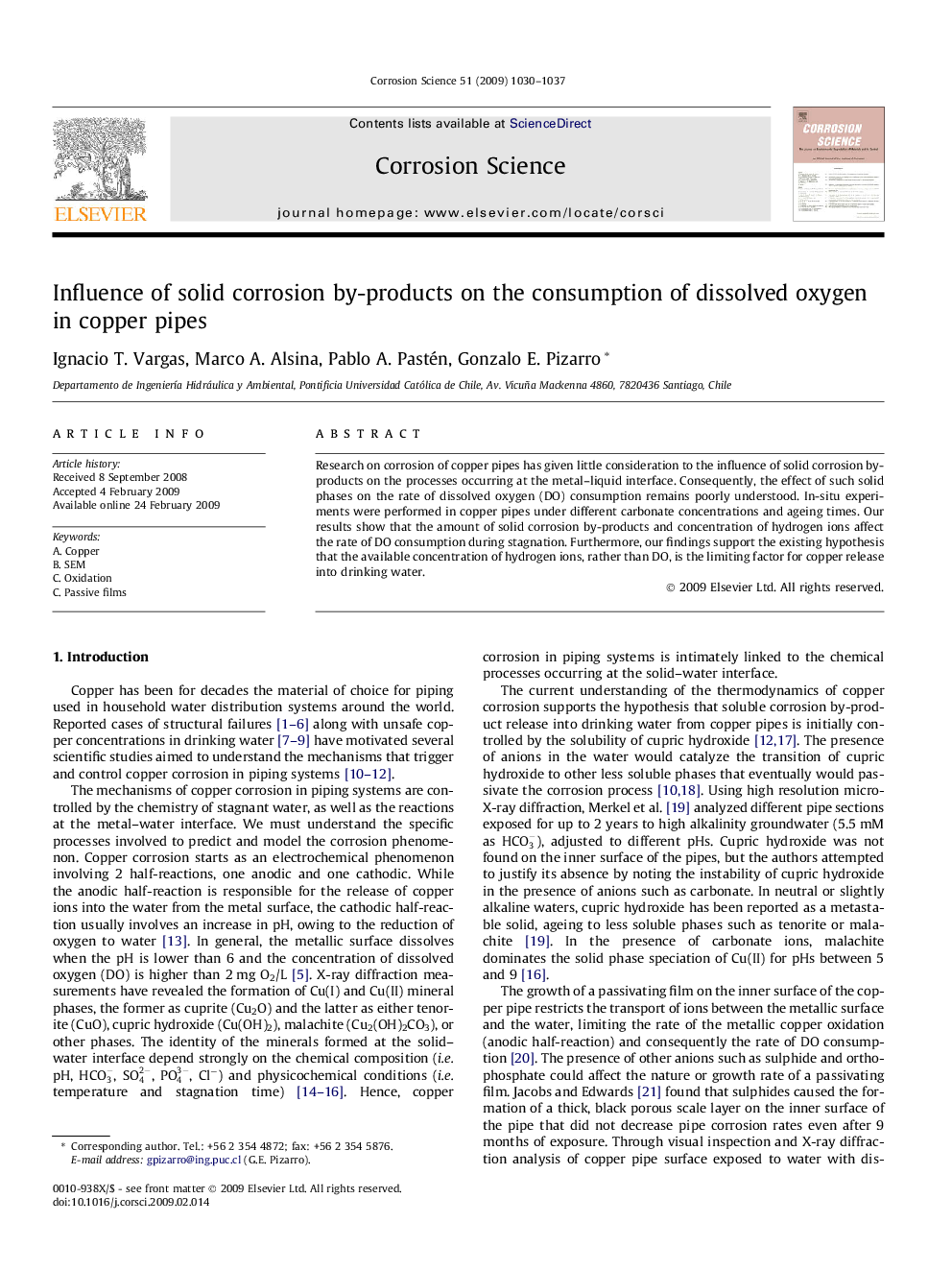| Article ID | Journal | Published Year | Pages | File Type |
|---|---|---|---|---|
| 1470590 | Corrosion Science | 2009 | 8 Pages |
Abstract
Research on corrosion of copper pipes has given little consideration to the influence of solid corrosion by-products on the processes occurring at the metal–liquid interface. Consequently, the effect of such solid phases on the rate of dissolved oxygen (DO) consumption remains poorly understood. In-situ experiments were performed in copper pipes under different carbonate concentrations and ageing times. Our results show that the amount of solid corrosion by-products and concentration of hydrogen ions affect the rate of DO consumption during stagnation. Furthermore, our findings support the existing hypothesis that the available concentration of hydrogen ions, rather than DO, is the limiting factor for copper release into drinking water.
Related Topics
Physical Sciences and Engineering
Materials Science
Ceramics and Composites
Authors
Ignacio T. Vargas, Marco A. Alsina, Pablo A. Pastén, Gonzalo E. Pizarro,
